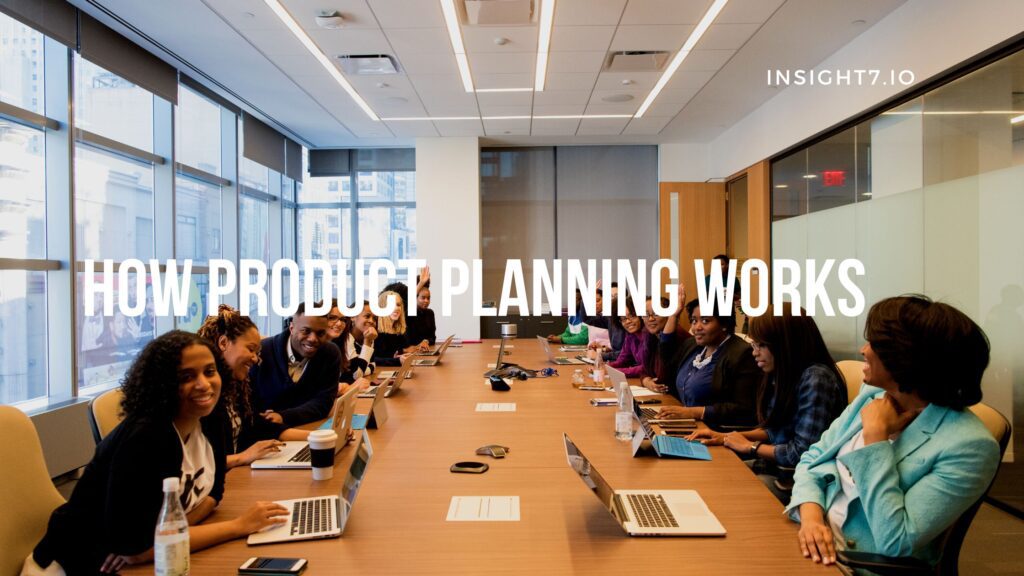How Product Planning Works
-
Bella Williams
- 10 min read


Product planning is a difficult term to define because it’s so broad and involves so many different aspects of a product manager’s job. In fact, it’s probably a much larger portion of your role as a PM than you realize.
How Product Planning Works
Product planning is the process of creating a product idea and following through on it until the product is introduced to the market.
A small company must also have an exit strategy for its product in case the product does not sell.
Product planning in marketing includes managing the product throughout its life using marketing strategies such as product improvements, differentiated distribution, price changes, and promotions.
Product Planning is Not One Meeting or a One-Time Activity
A common misconception among product owners is to think of “product planning” as just an activity, something they do once in the early stage of a product’s development.
They might hold a single meeting with their stakeholders. The meeting will help to decide, for example, what major themes to prioritize, who their target customers will be, and the basic pricing structure for the product.
From there, they jump straight into execution mode—never to revisit any of these big-picture strategic decisions again.
Of course, after you’ve gotten underway developing your product at any stage, the realities on the ground might change.
This is why it is important to not view product planning as a one-time step in the process and as a major strategic component of the process itself.
One great thing about understanding product planning as an ongoing part of your role, as opposed to a one-time task, is that it can give you a new framework that allows you to make changes to your initial planning when those changes are strategically called for.
Let’s say at various stages of your product’s development you gain new demographic data about your primary user persona. Or, your customer surveys reveal new and counterintuitive information about which features to prioritize in your next release.
Or you bring in a new stakeholder who has insights your team hasn’t considered before.
All of these scenarios might demand that you revisit the decisions you and your team made in your early-stage product planning sessions.
However, changing some of these agreed-upon priorities and decisions midway through your development can feel uncomfortable.
That is why it is essential to adjust your organization’s thinking to understand that product planning is never actually finished.
Developing the Product Concept
The first phase of product planning is developing the product concept. Marketing managers usually create ideas for new products by identifying certain problems that consumers must solve or various customer needs.
For example, a small computer retailer may see the need to create a computer repair division for the products it sells.
After the product idea is conceived, managers will start planning the dimensions and features of the product.
Some small companies will even develop a product mock-up or model.
Studying the Market
The next step in the product planning process is studying the competition. Many small companies will order secondary research information from vendors such as the NPD Group and Forrester Research.
Secondary research usually provides details on key competitors and their market share, which is the percent of total sales that they hold in the marketplace.
Some companies may also do a SWOT analysis (strengths, weaknesses, opportunities and threats), according to career website General Assembly.
A SWOT analysis will help them compare their strengths and weaknesses against those of key competitors, emphasizing product planning importance.
Using Marketing Research
A small company should consider doing both qualitative and quantitative marketing research for its new product. Focus groups are an example of qualitative information.
Focus groups allow companies to ask their consumers about their likes and dislike of a product in small groups.
A focus group allows the company to tweak the product concept before testing it through phone surveys–a more quantitative marketing research function.
Phone surveys enables a company to test its product concept on a larger scale, the results of which are more predictable across the general population.
Launching the Product
If the survey results prove favorable, the company may decide to sell the new product on a small scale or regional basis.
During this time, the company will distribute the products in one or more cities.
The company will run advertisements and sales promotions for the product, tracking sales results to determine the products potential success.
If sales figures are favorable, the company will then expand distribution even further. Eventually, the company may be able to sell the product on a national basis.
Tracking the Product Life Cycle
Product planning must also include managing the product through various stages of its product life cycle.
These stages include the introduction, growth, maturity and decline stages, according to the book Principles of Marketing, published by the University of Minnesota.
Sales are usually strong during the growth phase, while competition is low. However, continued success of the product will pique the interest of competitors, which will develop products of their own.
The introduction of these competitive products may force a small company to lower its price. This low pricing strategy may help prevent the small company from losing market share.
The company may also decide to better differentiate its product to keep its prices steady.
One product-planning example would be a small cell phone company developing new, useful features on its cell phones that competitors do not have.







